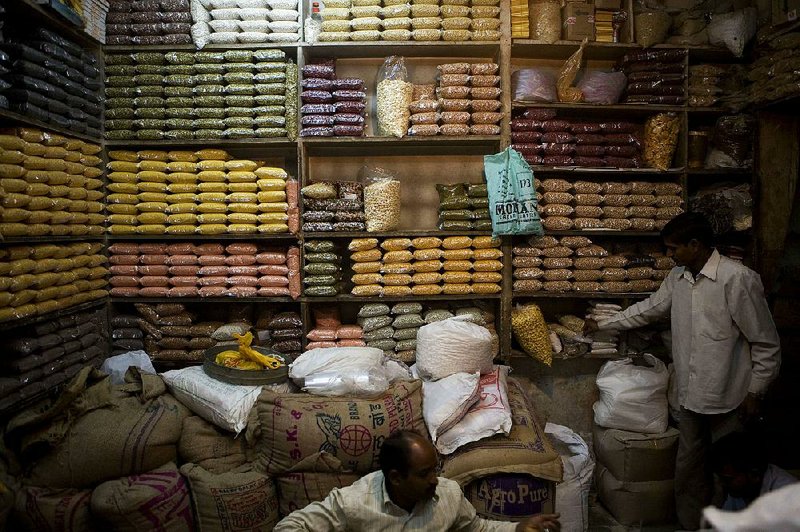Demand in Asia for lentils, chickpeas and other sources of protein has North American farmers swapping out wheat in favor of pulses -- plants harvested for their dry seeds, such as legumes.
AGT Food and Ingredients Inc., the world's largest exporter of peas and lentils, said farmers in Canada are poised to seed record acres of the crops this year.
"We have to recognize that the demand for vegetable protein in the emerging markets and in Asia is continuing to rise," Chief Executive Officer Murad Al-Katib said in an interview Tuesday after a fourth-quarter earnings call.
Plantings of peas and lentils in Canada will rise 33 percent in 2016 to 10 million acres, Al-Katib said. As demand grows, pulse crops are still fetching higher returns than grains or oilseeds, prices for which have fallen amid oversupply, he said.
"Every pulse is at historically high prices right now -- cereal grains are not; oilseeds are not," Al-Katib said on the call. "Farmers are planting more here, and I think demand is going to be strong enough to absorb it all."
Canada's lentil shipments to India, the world's top buyer, more than doubled from a year earlier to 278,443 tons from August through February, government data show. Consumption is also growing for high-protein legumes as food companies add them to everything from breakfast cereals to snacks.
Shares of Regina, Saskatchewan-based AGT gained 14 percent this year. On Tuesday, the stock reached the highest since the data's start in 2005. On Wednesday, Raymond James equity analyst Steven Hansen raised his rating on the stock to "outperform" from "market perform."
Export demand for peas will stay robust if harvests in India are smaller than expected, Canada's agriculture agency said in a report last week. AGT spent almost $61 million to purchase rail lines in 2015 to help speed up grain deliveries and could ramp up its bulk-handling facilities to handle an additional 1.65 million tons of capacity as Canadian production increases, Al-Katib said.
Output is also increasing in the U.S., where lentil sowings reached 493,000 acres in 2015, 75 percent higher than the prior season and the largest in five years, according to government data. Production climbed more than 50 percent from the prior year.
"Pulse acres are going to go up this year because that's the big money crop," Norm Hall, the president of the Agricultural Producers Association of Saskatchewan, said in a March 16 telephone interview from Wynyard.
Prices for peas have almost quadrupled in the past five years, and farmers are able to get the same yields as wheat with lower fertilizer costs, said Hall, who has planted pulses on his Saskatchewan farm for the past 30 years. By contrast, wheat, corn and soybean futures traded in Chicago have posted three straight annual declines.
Growers are fetching record prices for green lentils, according to Brian Clancey, the president and senior market analyst at Vancouver-based Stat Communications Ltd. Farmers are getting bids of as much as 80 Canadian cents per pound of No. 1 large-green lentils, he said. That's up from 45 Canadian cents this time last year.
U.S. lentil and yellow-pea acres will probably gain this year, with plantings for each crop topping 500,000 acres, said Pete Klaiber, the vice president of marketing for the Moscow, Idaho-based USA Dry Pea & Lentil Council. Supplies of lentils and yellow peas are tight and will be "very tight" before the harvest begins in July and August, he said.
"There's going to be a sigh of relief when the new crop comes in," Klaiber said. "It is a crop that's making money for farmers. Because of the increased popularity and increased desire to put it in the ground, people have been scrambling to find enough seed for additional acres."
Business on 03/24/2016
